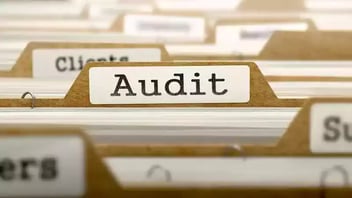How Do I Analyze a Website's SEO?
By understanding how search engines rank websites, businesses can optimize their web presence to attract visitors, generate more leads, and achieve greater success. However, conducting an effective SEO analysis can take a lot of work, especially for those unfamiliar with the intricacies of search engine algorithms.
For this reason, we're here to walk you through the process of website SEO analysis, providing a step-by-step approach to identifying and addressing key factors that influence search rankings.

Step 1: Technical SEO Audit
Before delving into the intricacies of content and off-page SEO, it's crucial to establish a solid technical foundation for your website, and you can do so by conducting an SEO audit for your website. A technical SEO audit involves evaluating the technical aspects of your website that impact its crawlability, indexability, and overall user experience. Addressing any technical issues ensures that search engines can effectively discover, understand, and rank your website.
Recommended SEO Audit Tools:
-
Google Search Console: This free tool from Google provides insights into your website's technical performance, including issues with indexing, crawl errors, and mobile-friendliness.
-
Screaming Frog SEO Spider: This paid tool crawls your website like a search engine, identifying technical issues such as broken links, redirect chains, and missing meta tags.
-
PageSpeed Insights: This free tool from Google analyzes your website's loading speed and provides recommendations for improvement.
On-page SEO
On-page SEO refers to optimizing individual web pages to enhance search engine visibility. This includes ensuring that your pages have proper title tags, meta descriptions, header tags (H1, H2, H3), and image alt tags. These elements provide search engines with valuable information about the content of your pages, helping them determine their relevance to specific search queries.
Website Architecture
The structure of your website plays a critical role in its search engine performance. A well-organized website with clear navigation and a logical hierarchy of pages makes it easier for both search engines and users to find the information they need. Avoid complex navigation structures, excessive redirects, and broken links, as these can hinder crawlability and negatively impact user experience.
Mobile-friendliness
In today's mobile-first world, ensuring your website is optimized for mobile devices is essential. Google prioritizes mobile-friendly websites in its search rankings, and a poor mobile experience can lead to lost visitors and decreased conversions. Use responsive design principles to ensure your website adapts seamlessly to different screen sizes and provides an optimal user experience across all devices.
Page Loading Speed
Website speed is crucial to user satisfaction and search engine rankings. Slow-loading pages can increase bounce rates and decrease engagement, negatively impacting your website's SEO performance. Optimize images, minimize code complexity, and utilize caching techniques to ensure your website loads quickly and efficiently.
Step 2: Content SEO Analysis
Once you've established a solid technical foundation, it's time to delve into the heart of your website: its content. Content is the lifeblood of any successful website, attracting visitors, engaging users, and ultimately driving conversions. However, not all content is created equal. Effective content SEO involves creating and optimizing content that is both search-engine-friendly and user-centric.
Recommended SEO Analysis Tools:
- Google Analytics: This free tool tracks your website's traffic and provides insights into user behavior, such as which pages are most popular and where visitors are coming from.
- Ahrefs: This paid tool provides comprehensive keyword research and backlink analysis, helping you identify opportunities to improve your content's relevance and authority.
- SEMrush: This paid tool offers a suite of SEO tools, including keyword research, site audits, and competitor analysis.
Keyword Research
The first step in content SEO is to identify the relevant keywords that your target audience is searching for. Use keyword research tools to uncover a comprehensive list of keywords that align with your website's niche and target audience. Prioritize keywords with a balance of search volume and competition, ensuring they are relevant to your content and have the potential to drive targeted traffic.
Content Quality
Your content quality is paramount for search engine optimization and user satisfaction. Search engines favor websites that provide in-depth, informative, and well-written content that addresses the needs and interests of their audience. Avoid keyword stuffing and focus on creating high-quality content that is engaging, informative, and relevant to your target keywords.
Content Freshness
Regularly updating and refreshing your website's content demonstrates to search engines that your site is active and relevant. Fresh content signals to search engines that your website is a valuable source of information, increasing its chances of appearing in top search results. Strive to publish new content regularly and keep existing content up-to-date to maintain search engine relevance and engage your audience.
Content Optimization
While creating high-quality, relevant content is essential, optimizing it for search engines is equally important. Ensure that your content naturally incorporates your target keywords throughout the text, including title tags, meta descriptions, header tags, and subheadings. Use relevant images and videos to enhance your content and provide additional value for users. By optimizing your content, you make it easier for search engines to understand and rank your website for relevant search queries.
Step 3: Off-page SEO Analysis
While on-page SEO focuses on optimizing your website's internal elements, off-page SEO deals with the factors external to your site that influence its search engine rankings. Off-page SEO encompasses various activities that build your website's authority and credibility in the eyes of search engines. By understanding and addressing off-page SEO factors, you can expand your website's reach beyond its own pages and attract more visitors from across the web.
Recommended Off-page SEO Analysis Tools:
- Ahrefs: Provides valuable insights into internal and external link structures (we're we're a fan).
- Moz: This paid tool provides backlink analysis, domain authority tracking, and social media analysis.
- Majestic: This paid tool provides backlink analysis and domain authority tracking.
- BuzzSumo: This paid tool helps you identify and analyze content that is performing well on social media.
Backlink Audit
Backlinks, also known as inbound links, are links from other websites that point to your website. Backlinks serve as votes of confidence, signaling to search engines that your website is a valuable and trustworthy source of information. A high-quality backlink profile, with links from reputable and relevant websites (ethical link building), can significantly boost your website's search rankings.
Social Media Presence
Social media plays a crucial role in off-page SEO. An active and engaged social media presence can help you build brand awareness, drive traffic to your website, and generate backlinks. Share your content on relevant social media platforms, engage with your audience, and participate in industry conversations to amplify your website's online presence.
Local SEO
If your business has a physical location or serves a specific geographic area, local SEO is essential for ensuring your website is found by local searchers. Optimize your website for local keywords, create Google My Business listings, and build relationships with local businesses and organizations to enhance your local search visibility.
Industry Authority
Establishing yourself as an authority in your industry can significantly impact your website's off-page SEO. Participate in industry events, contribute to relevant publications, and engage with thought leaders in your field. These activities can lead to backlinks, mentions, and increased brand awareness, boosting your website's credibility and search rankings.
Step 4: Competitor Analysis
In the competitive landscape of the digital world, understanding and analyzing your competitors' SEO strategies is crucial for staying ahead of the curve. Competitor analysis involves identifying your top competitors in the search results and evaluating their SEO strategies to uncover their strengths, weaknesses, and potential areas for improvement. By benchmarking your website against your competitors, you can gain valuable insights into what's working well and identify opportunities to differentiate yourself and gain an edge in the search rankings.
Recommended Competitor Analysis Tools:
- SpyFu: This paid tool provides insights into your competitors' SEO strategies, including their keyword rankings, backlinks, and organic traffic.
- SEMrush: This paid tool offers a competitor analysis feature that allows you to compare your website's SEO performance against your competitors.
- SimilarWeb: This paid tool provides insights into your competitor's website traffic, including sources of traffic and user behavior.
Identify Top Competitors
The first step in a competitor analysis is identifying your main competitors in the search results. Use search engines and industry-specific directories to uncover websites that appear prominently for your target keywords. Analyze their websites to understand their niche, target audience, and overall SEO strategy.
Analyze Competitor SEO
Once you've identified your top competitors, delve into their SEO strategies. Evaluate their keyword usage, content quality, backlink profile, and social media presence. Use SEO tools to analyze their website's technical aspects, including page loading speed, mobile-friendliness, and on-page optimization.
Benchmark Your Website
Compare your website's SEO performance against your competitors. Identify areas where you excel and areas where you may fall behind. Use this information to prioritize your SEO efforts and make data-driven decisions to improve your website's search rankings.
Uncover Potential Opportunities
Competitor analysis can reveal hidden opportunities to improve your website's SEO. Identify gaps in your competitors' strategies, such as untapped keywords or underperforming content areas. Exploit these opportunities to differentiate your website and attract more visitors from relevant search queries.
Stay Informed
Regularly monitor your competitors' SEO strategies to stay informed about industry trends and best practices. This ongoing analysis will help you adapt your own strategies and maintain a competitive edge in the ever-evolving search landscape.
Step 5: Ongoing SEO Monitoring
In the dynamic world of search engine optimization, a one-time SEO analysis is not enough. Search engine algorithms evolve, user behavior changes and new competitors emerge, making ongoing monitoring and optimization essential for maintaining your website's search engine visibility and achieving long-term success. Tracking key SEO metrics and making data-driven adjustments ensures your website remains relevant, competitive, and aligned with the latest search engine trends.
Recommended SEO Monitoring Tools:
- Google Analytics: This free tool provides ongoing tracking of your website's traffic, keyword rankings, and conversion rates.
- Google Search Console: This free tool continuously monitors your website's technical performance and indexing status.
- RankIQ: This paid tool provides daily updates on your keyword rankings and organic traffic.
Track SEO Metrics
Regularly monitor key SEO metrics to assess your website's performance and identify areas for improvement. These metrics may include keyword rankings, website traffic, organic search traffic, conversion rates, and bounce rates. Track these metrics over time to identify trends, measure the impact of your SEO efforts, and make informed decisions about your strategy.
Analyze Data and Identify Patterns
Once you have a collection of SEO data, analyze it to uncover patterns and insights. Identify which keywords drive the most traffic, which pages generate the most conversions, and which traffic sources are most valuable. Use this information to prioritize your SEO efforts and focus on areas that impact your website's performance.
Make Data-Driven Adjustments
Based on your data analysis, make data-driven adjustments to your SEO strategy. If specific keywords are underperforming, consider expanding your keyword research and optimizing your content accordingly. If specific pages have high bounce rates, analyze their content and user experience to identify areas for improvement.
Adapt to Changing Search Algorithms
Search engine algorithms are constantly evolving, and staying up-to-date with the latest changes is crucial. Follow industry news, attend SEO conferences, and consult SEO experts to ensure your website complies with the latest search engine guidelines.
Continuously Improve and Refine
SEO is a continuous process, not a one-time task. Regularly review your SEO strategy, identify areas for improvement, and make adjustments based on your data analysis. By staying proactive and adapting to changing trends, you can ensure that your website remains competitive and continues to attract organic traffic over the long term.
Achieve Search Engine Success
A comprehensive SEO analysis is essential for any website to improve its search engine visibility and attract more organic traffic. Following the steps outlined in this blog post, you can identify and address any technical issues, optimize your content for search engines, build backlinks, and track your progress over time. With the right tools and strategies, you can ensure your website is well-positioned to succeed in the ever-evolving world of search engine optimization.
This content is also available in:
- Deutsch: Wie analysiere ich die SEO einer Website?
- Español: ¿Cómo analizo el SEO de un sitio web?
- Français: Comment analyser le référencement d'un site web ?
- Italiano: Come si analizza la SEO di un sito web?
- Română: Cum analizez SEO-ul unui site web?
- 简体中文: 如何分析网站的搜索引擎优化?









Leave a Comment